An Interpretation Of SYNECDOCHE, NEW YORK
An interpretation of SYNECDOCHE, NEW YORK
So if you haven’t seen Charlie Kaufman’s brilliant Synecdoche, NY, you may not want to read this because I’m going to get into a lot of the plot points and such. Then again, maybe you do want to read it. It probably wouldn’t hurt to know what happens before you go in. After all, Flannery O'Connor used to tell her audiences what would happen in A Good Man is Hard to Find before she would read it to them. She wanted her audiences to pay attention to how she told the story, not the story itself. Which isn’t a bad approach to Synecdoche.
First of all, I must admit that this theory on the film is not mine alone. No, this was hashed out at length with my friends Adam Ohler (whypandawhy) and Michael Reich (videothing). This is certainly the result of a group effort. And, all modesty aside, I must admit that although Charlie Kaufman refuses to discuss what the film means, I really think our interpretation is correct.
Okay, it’s gonna get spoiler-y from here out. You’ve been warned.
The key to understanding Synecdoche, NY is realizing that protagonist Caden Cotard (Phillip Seymour Hoffman) is dead. He has killed himself before the movie even starts. I’ll admit I’m not 100% clear on whether the events depicted in the film are purgatory, or a Bullet in the Brain sort of death dream, or what have you. But the specifics on that are not really important. Whatever it is, we seem to be in some sort of time loop, a la Star Trek: The Next Generation (more on this later). And the time line is muddled, sped up, mashed together; as if Caden is reliving all the moments that led to his suicide. And Caden is completely oblivious to it. Maybe even in denial.
The first hint we get that Caden is dead comes immediately at the film’s open. Over black, a child (presumably Caden’s daughter Olive) sings a simple rhyme written by Kaufman himself. The lyrics are innocent enough at first:
There’s a place I long to be
A certain town that’s dear to me
Home to Mohawks and G.E.
It’s called Schenectady
I was born there and I’ll die there
My first home I hope to buy there
Have a kid or at least try there
Sweet Schenectady.
At this point, we fade in from black onto an image of a clock. The time is 7:45 AM. And the lyrics to the song offer the film’s first clue as they take a decidedly darker turn:
And when I’m buried and I’m dead
Upstate worms will eat my head
For every person that you know
Once you say…
Think you’ve seen…
You won’t see them again
There’s always a last time
That you see everyone.
There’s always a never again.
It certainly sums up the tone of the film. But look at those words. The words over the first image of the film are “I’m buried and I’m dead.” You don’t notice it on first view but that is the case. Then the soundscape changes to the morning radio show that wakens Caden from his slumber. It is a literary show; the host and a European woman are discussing death. She reads a poem about winter and its bareness. This is how the movie starts.
The movie then cuts to Caden’s wife wiping his 5 year old daughter’s ass. Her shit is green and it causes some minor concern. I think what is at play here is some symbolism of the color green in relation to Caden. Her name is Olive (olives are green), her shit is green, she wears a green jacket in one prominent scene, and later in the film – as Caden reads her journal – she remembers said green jacket fondly. I suppose that the green represents life. Olive is Caden’s life. And when she is taken from him, it ultimately leads to his demise.
The first 25 to 30 minutes of the film are fairly straightforward. Sure there are surreal moments with Caden’s new mystery disease and when he gets whacked in the head by a faucet from an exploding sink. But compared to the rest of the movie, this is fairly benign. These are the moments in Caden’s life before his suicide. He still has his family, he still has his career as a theater director. Things are falling apart but he’s not done yet.
It’s only after Caden’s wife (who’s name is Adele Lack – Adele meaning “noble” and Lack meaning, well, “without”) leaves for Europe with Olive that things go off the track. Caden’s wasting disease accelerates. The disease is not a real disease but yet a manifestation of Caden’s insecurities and neurosis. In fact, just before Olive leaves, Caden walks her to school and explains that the boils on his skin are called “neuroses” which is a physical ailment different from “neurosis,” which means you’re crazy. Riiiiight.
Another huge clue comes when Caden goes to see his marriage counselor alone. He notices a book on the table. It’s called “Little Winky” and it was written by Horace Wood.
“‘Little Winky’ is a virulent anti-semite, who works in a gin mill during prohibition. The story follows his initiation into the Klan, his introduction to the pornographic snuff industry and his ultimate degradation at the hands of a black ex-convict, with whom he embarks on a homosexual affair,” his therapist explains to him. She goes on to inform him that Horace Wood wrote the book when he was four years old. Caden is shocked.
“He wrote this when he was four?!” he exclaims
She responds, “Well he must have. He killed himself when he was five.”
“Why did he kill himself?” Caden asks.
“I don’t know. Why did you?”
Why did you?
Caden is taken aback. "What did you say?“
"I said why would you?”
It seems that Caden has killed himself at some point after his wife left him. Wherever he is now, he is denying the fact that he is dead. And it’s at this point that, just briefly, a little bit of the truth has broken out and smacked him in the face. But of course, he quickly returns to his denial and things move along.
He tries to move on in life and love. He has always had a flirtatious relationship with Hazel (Samantha Morton), his theater’s ticket office girl. But due to his own insecurites and his own Hamlet-esque inability to act, he ruins things. In one of the few scenes that leaves Caden’s perspective in the film, Hazel buys a house that is perpetually on fire. This is one of the films more poetic set pieces and it is a step further from reality than the rest of the movie. It’s because Caden wasn’t there to see this scene. This is something that happened without him but in his death rattle, he imagines what it must have been like. The woman showing Hazel the house admits that her son, Derek, is going through a divorce and is living in the basement while he sorts things out. She asks Hazel if she would like to meet him and immediately calls for him. Derek emerges from the basement, shirtless; his body obviously superior to Caden’s. Hazel later marries Derek and starts a family with him. So it is natural that Caden would imagine there meeting as orchestrated, overly simplistic, and portraying Derek in a less than flattering manner. In addition, I would imagine that the ever-flaming house represents that love is hell for Caden. He wants it, he can take it, but he can’t seem to get it. It burns and it doesn’t stop. It doesn’t ever even reduce the house to ashes. It only eventually kills Hazel (“I think it was smoke inhalation,” the EMT tell Caden).
Later in the film, Caden spots Hazel and Derek with their children at a hotel rooftop pool. It destroys him. He attempts to throw himself off the roof but is stopped by a stranger. This factors in later, when Caden is directing his never ending opus that blindly grasps for what is “true.”
Caden receives a “genius grant” to create a work of art on the stage. This seems like a good thing at first but ultimately is his undoing. It’s as if his acceptance of the grant was the beginning of his descent to hell, or some other undesirable plane. The play features 1000s of actors playing themselves in a huge warehouse. If you’ve seen the movie you know what happens. It gets more and more meta, crawling up its own ass like some sort of perverse ouroboros, to the point where Caden hires Sammy Barnathan (a man that has been following Caden for years and is strategically placed in the film’s background leading up to his introduction) to play himself as the director of the play. Sammy plays Caden so well that he falls helplessly in love with Hazel (and not the stand in hired to play her). When he cannot have her, Sammy leaps from the roof of the hotel roof pool set, killing himself while shouting something to the effect of “take a look at yourself, Caden.” Caden stand over Sammy’s lifeless body shouting “I didn’t do it! I never jumped! Somebody stopped me! Somebody stopped me!” I suspect that no one actually stopped him.
The film gets even denser at this point. Caden starts spending nights, cleaning Adele’s apartment in New York. He never sees her, only hears recordings of her voice. And Adele believes that the work is being done by a spinstress cleaning woman named Ellen. Eventually, Caden writes Ellen into his play. But Caden is old and burnt out on life. After decades of claiming that he “knows how to do the play now” and a seemingly infinite amount of titles, he more or less gives up. He allows the actress playing Ellen to start playing his role as director and he becomes the cleaning woman. Ellen almost immediately accomplishes with the play what Caden has been trying to and failing to create his entire life.
Caden the cleaning lady deteriorates. It’s clear that the end is near. He gets an ear piece from Ellen to wear in his ear in which she tells him every last thing to do, something he’s been wishing for his entire life – someone else to make the decisions for him. Caden walks through the city and to the warehouse. There are dead bodies everywhere. He eventually finds an old woman who is Ellen’s mother. She holds him on a bench There is a sunny flash back to Ellen and her mother some years ago when Ellen was just a child. It becomes clear that all Ellen wanted was a child to recreate that day with, but she never had one. I can’t be sure what this all speaks to. This is one part of the film where I am unsure of my theory. But I think it speaks to one of two things: either Caden feels as if he should never have been Caden, that he should have been a simple cleaning woman; or, that Caden actually wasn’t Caden. Perhaps this is Ellen’s veiled purgatory (although I believe this to be unlikely. Just food for thought). Whatever it is, there’s something at play here that I can’t quite figure out. If you have any ideas let me know. Clearly the idea of failing to have offspring, one’s thwarted attempt at immortality figures in here. Perhaps Caden never had a child after all? I welcome your thoughts on this matter.
The voice in Caden’s ear tells him that the time is 7:45. There is graffiti on the wall of an analog clock reading 7:45. Remember the opening image of the film? A clock reading 7:45. It is at this point that the voice in Caden’s ear tells him to “die.” Everything fades to white. End of the movie. But not the end of Caden’s cycle.
One last note: “Caden” is Scottish for battle. "Cotard" (Caden’s last name) is a syndrome in which one believes him or herself to already be dead.
I would say the plot of the movie is not the point. Obviously, it’s the themes of mortality, love, and inaction that are important here. And while the film is deeply and wholly depressing, it is not without its message. Perhaps Caden wasted his life and things didn’t work out for him. But that doesn’t have to be us. If ever a movie has urged its viewers to go out, grab life by the balls, and make your own fate, this is it.
More Posts from Moonys-brightest-star and Others
You fucking fools. Scooby Doo: Mystery Incorporated (2010) WAS the Scooby Doo show for adults
skz pls
Skz drop the tour dates so we can accurately plan on seeing them around my besties top surgery






James wasn't the kind of person who liked to complain or speak about his problems. He didn't feel worthy of it, seeing how everyone else had it. He bootle up everything... until he couldn't anymore. Then he exploted, even the sun had their storms.














I think I hate my father.
The Sun is Also a Star, Nicola Yoon | Woodtangle, Mary Ruefle | pinterest comment | Anatomy of Cat and Dog Skeletons, William Cheselden (quote unknown) | Father, The Front Bottoms | I'm the Villian in his history., Nat (Oh Fathers, Key Ballah) | @/inkskinned on tumblr | Thomas Builds-the-Fire, Smoke Signals, Sherman Alexie | no children art print, Rainboon | Untitled, Franz Wright | Franz Kafka in a letter to his father | Seventeen Going Under, Sam Fender | Someday I'll Love Ocean Vuong, Ocean Vuong (from Night Sky With Exit Wounds)










hyunjin talker go: le gala des pièces jaunes
The Midnight Club - Season Two
I'm very disappointed that Netflix has decided not to pursue a second season of THE MIDNIGHT CLUB.
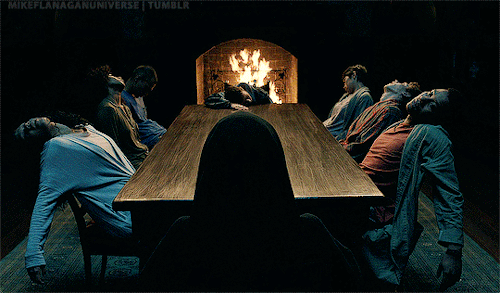
My biggest disappointment is that we left so many story threads open, holding them back for the hypothetical second season, which is always a gamble.
So I'm writing this blog as our official second season, so you can know what might have been, learn the fates of your favorite characters, and know the answers to those dangling story threads from the first season.
So for those of you who want to know what we were planning to do, here's a look at what would have been season 2!
AMESH Season 2 would open with Amesh, his glioblastoma advancing quickly. He would tell the first story of the season, but would be struggling to make it through. We'd focus on his love story with Natsuki for those first few episodes as it becomes clear that Amesh's death is imminent.
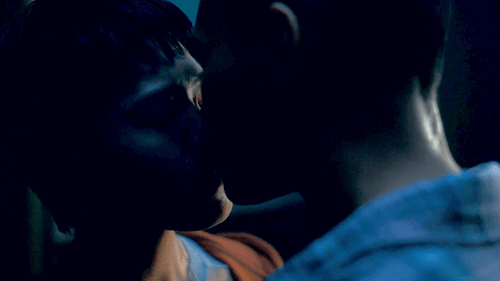
Meanwhile, Ilonka is trying to reconcile how she was fooled by Julia Jayne, all while falling further in love with Kevin, and she realizes he may be fading faster than he lets on.
Ilonka begins a serialized story in an effort to encourage him to "stay alive a little longer," like he did in season one. And the story she tells is... REMEMBER ME.
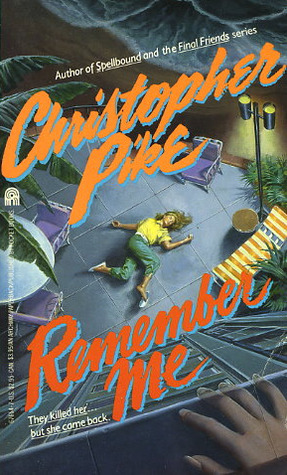
This was the thing I was most excited about for this season.
REMEMBER ME is one of my all-time favorite Pike books - it tells the story of a teenage girl who is pushed off a balcony, and awakens as a ghost. She has to navigate being a spirit while trying to solve her own murder. We would have stretched this story out over 5 episodes. We were going to use it as a vehicle for Ilonka to try to come to terms with the fact that she is going to die, and to begin to trying to wrap her head around being a ghost... but this is the coolest part... the lead character of Ilonka's story wouldn't be played by Ilonka. She'd be played by...
Anya.

Because this is how we live on, isn't it? In the minds of those we leave behind. And Ilonka would use REMEMBER ME as a way to imagine her dear friend Anya, waking up as a ghost, navigating the afterlife. And this sets up one of the best mechanisms of the show - even if a character dies, as long as they're remembered by members of the club, they live on in their stories.
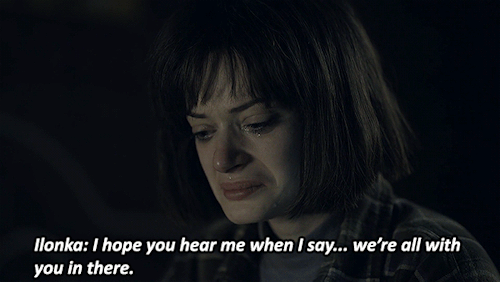
As the story starts to pick up steam, though, the group will have to deal with the death of Amesh, which he greets with grace and bravery.
In his final moments, he sees someone in his room - the Janitor from the first season, as played by Robert Longstreet, who says comforting things to Amesh even though he can't respond.
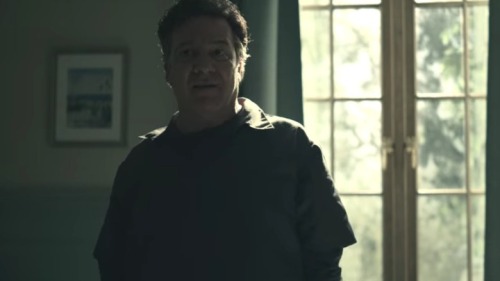
In his final, final moments, the SHADOW descends upon Amesh, and he is engulfed into it, which reinforces the idea that the Shadow is DEATH...

With Amesh's death comes something that upends the entire thing: a NEW PATIENT. We didn't work out too much about who this would be, but it would be a new roommate for Ilonka. Someone taking Anya's old bed. Ilonka would find herself being initially cold to her - just as Anya was when Ilonka arrived. Even feeling like this new girl shouldn't necessarily be ushered into the Club. But of course they would develop a beautiful friendship over the course of the season. The new girl joins the club, where something else exciting is happening - Cheri is telling a story. We hadn't decided which one, but I think it might have been MONSTER.
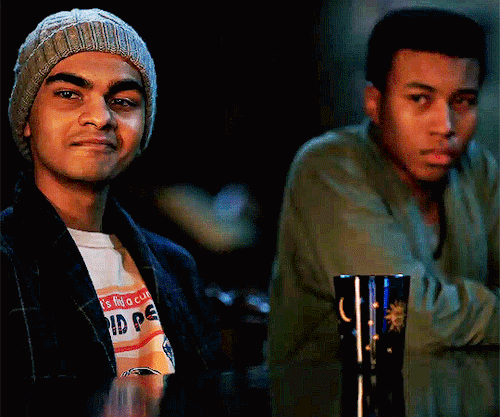
Natsuki would be the next to die, which would be heartbreaking. And again, she would talk to the janitor just before it happened... and again, the Shadow would come in the final moments.

For Spence, though, things would take a different turn.
The advancements in HIV treatment in the late 90's would come into play, and we'd see his prognosis change. The HIV cocktail came out in Dec 1995, and we really wanted to explore that.
Spence would ride the swell of antiviral advancements, and by the end of the season, he'd no longer be classified as terminal. In the finale of season 2, Spence would leave Brightcliffe just like Sandra did in Season 1, heading off to manage his disease and live the rest of his life.
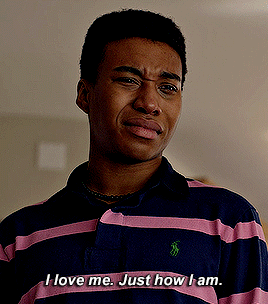
But onto the BIG MYSTERIES of the season one... here are some answers: What is up with Dr. Stanton's tattoo and bald head? Well, a few things. First, Dr. Stanton is actually the daughter of the original Paragon cult leader, Aceso. Her nickname was Athena, she wrote the Paragon journal that Ilonka found in S1. She turned on her mother and helped the kids escape, but because she was part of the cult in her teenage years, she had the tattoo.
It was her initials that Ilonka found carved into the tree in season 1 (her maiden name was Georgina Ballard, hence the G.B. that Ilonka finds carved in the tree).
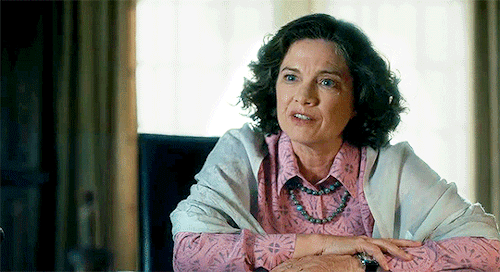
She hated what her mother became, and the atrocities of the cult. She reclaimed the property after her mom was gone, and wanted to change it into a place that celebrated life. She was trying to undo her mother's legacy and leave something behind that was beautiful. She is wearing a wig at the end of S1 not because of a sinister reason, but because she is undergoing chemo. Dr. Stanton has cancer. Having helped so many people deal with disease, she now has to deal with it herself.
Her treatment would be successful, and she'd go into remission, but having to face that - while caring for the terminal kids at Brightcliffe - was going to be a very introspective arc for Stanton.
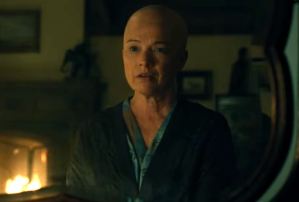
What about the Living Shadow? It's Death, right? Well... no.
At the end of the season, Kevin will die... followed shortly by Ilonka. And as she is dying, two things will happen. First, she'll find herself talking to the Janitor, played by Robert Longstreet... and she'll make a discovery.
HE is Death. And nothing to be afraid of. It turns out no one else ever saw this character. Stanton has a cleaning service, and the Nurse practitioners make up the rooms - the only people who ever saw this mysterious Janitor were the patients. He is Death, and offers them kind words before they die. Then what was the Shadow?
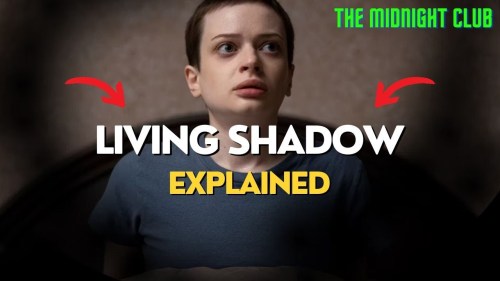
This is an idea we take directly from the book REMEMBER ME, and we'll see it play out in the final moments of Ilona's final tale. In Pike's book, Shari is pursued by a dark entity called The Shadow. When it finally catches her, though, it turns out it is not a bad thing at all.
The Shadow is THEMSELVES. It's the Unknown. As it engulfs someone, in the last moment of their life, it takes them through a place of understanding and catharsis, preparing them for the next step.
THIS is what happened to Anya in S1 when the Shadow finally reached her - that's why she fantasized a life beyond Brightcliffe, which ultimately let her find acceptance of her death. It looks different for everybody, depending on their mind-set - because it is simply an extension of themselves.
The Shadow is just the final catharsis, a return to our original form - it is a moment of true understanding, and once we experience it, we move on to the next place.
We see the Shadow in full effect when it finally comes for Kevin. KEVIN DIES with Ilonka at his side, and it leads to the biggest reveal of the season:
Who were the Mirror Man and the Cataract Woman?
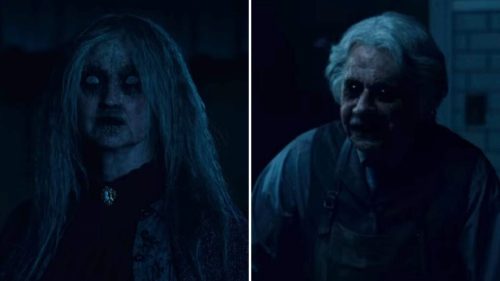
They were Stanley Oscar Freelan and his wife, who built Brightcliffe (fun trivia, he is named after the real-life Freelan Oscar Stanley, who built my favorite hotel in America - the Stanley Hotel. The Stanley is also the inspiration for THE SHINING!).
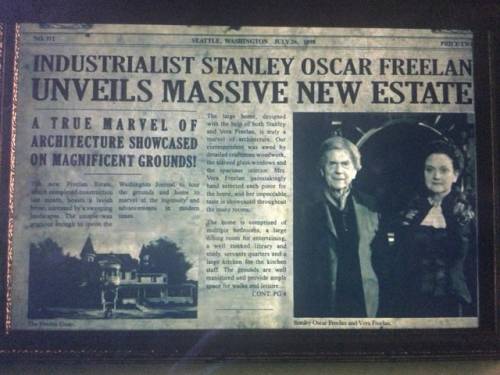
But more than that... there's a reason that Ilonka only sees Stanley in the mirror, and sees the Cataract Woman whenever she looked at Kevin. This is something else we took from Pike's original book... these aren't ghosts, but glimpses of PAST LIVES.
Ilonka WAS Stanley Oscar Freelan, and Kevin WAS his wife. They've lived many lives this way, and are true SOUL MATES - they always find each other, and they always fall in love. In this life, they knew it would be a short one, so they agreed to find each other in the house they built. They've been "remembering" who they are, and glimpsing their former selves in reflections, and sometimes when they look at each other. This is also why Ilonka's very first words to Kevin in S1 were "Do I know you?" and why Kevin thought she was familiar as well. They are two souls who always find each other, again and again.
The story is this: Stanley was dying, and built this cliffside home hoping that the seaside air would help him. It did, and he far outlived his prognosis (this is also true of the real-life Freelan Stanley). However, his wife began to succumb to dementia.
She would wander the halls, looking for him ("Darling!") and would even forget to feed herself ("I'm starving...") and she eventually refused to leave the basement. Heartbroken for her, Stanley painted the walls to resemble the woodland view, and the ceiling to resemble the night sky, so that it would be a little more beautiful for her.
He also painted a labyrinth on the floor, which was a technique used to try to curb the effects of dementia. She'd walk the pattern of the maze and it was believed it could help her cognition. Eventually, she developed frightening cataracts, but Stanley loved her through it all.
They were soul mates.
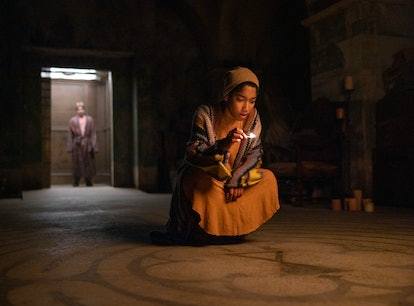
So while they seemed scary in season 1, that was just how Ilonka and Kevin's mind were trying to remember their pasts. We even had their faces distorting in ways consistent with how memories degrade over time. When the Shadow comes for Ilonka, and gives her this understanding - this "remembering" - she realizes she has nothing to fear. She and Kevin will shed these personas and be reborn, and have the joy of finding each other another way. The Shadow comes for her, Death takes her gently, and Ilonka goes off with Kevin back into the cosmos, ready for their next incarnation. The series would end with Cheri telling this story to a whole new table of patients, including our new series leads. Most of our original cast now would exist as stories, a story told to the next "class" of storytellers at the table, all of whom we will have met by the end of the season. A story called "The Midnight Club."
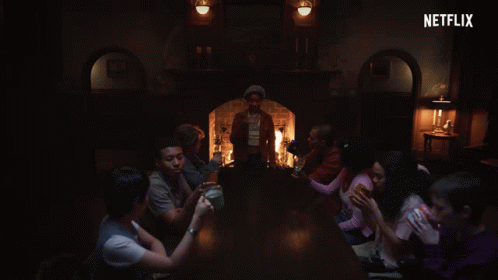
Well, that's it... that was what we had in mind. It's a shame we won't get to make it, but it would be a bigger shame if you guys simply had to live with the unanswered questions and the cliffhanger ending. I loved making this show, and I am so proud of the cast and crew. Particularly our cast, who attacked this story with incredible spirit and bravery each and every day.
But for now, we'll put the fire out, and leave the library dark and quiet. To those before, and to those after. To us now, and to those beyond.
Seen or unseen, here but not here.
I'll always be grateful that I got to be part of this Club.











I HAVE MY MOTHER'S FACE AND HER GRIEF
Janet Fitch // Lady Bird (2017) dir. Greta Gerwig // Chen Chen // Youadan Teddy // Ocean Vuong Someday I'll Love Ocean Vuong // Mitski Class of 2013 // 誰も知らない Nobody Knows (2004) dir. Hirokazu Kore-eda // Fatima Aamer Bilal days where my whole world is my bed. // death-born-aphrodite (tumblr) // Ocean Vuong On Earth We're Briefly Gorgeous // Hieu Minh Nguyen Buffet Etiquette




HAN ♡ '락(樂)' (231111)
devastated to announce that actually sitting down to write, with no distractions, actually works
-
 ghosttfish liked this · 3 months ago
ghosttfish liked this · 3 months ago -
 moonys-brightest-star reblogged this · 5 months ago
moonys-brightest-star reblogged this · 5 months ago -
 moonys-brightest-star liked this · 5 months ago
moonys-brightest-star liked this · 5 months ago -
 yenntrash liked this · 5 months ago
yenntrash liked this · 5 months ago -
 toxichydroxic liked this · 5 months ago
toxichydroxic liked this · 5 months ago -
 deschanels liked this · 5 months ago
deschanels liked this · 5 months ago -
 vedastellar liked this · 6 months ago
vedastellar liked this · 6 months ago -
 allofvlogs liked this · 7 months ago
allofvlogs liked this · 7 months ago -
 bookwormrants reblogged this · 7 months ago
bookwormrants reblogged this · 7 months ago -
 bookwormrants liked this · 7 months ago
bookwormrants liked this · 7 months ago -
 solunair-16 reblogged this · 8 months ago
solunair-16 reblogged this · 8 months ago -
 joyful-nihilism liked this · 8 months ago
joyful-nihilism liked this · 8 months ago -
 trippingspook liked this · 9 months ago
trippingspook liked this · 9 months ago -
 callhermilf liked this · 1 year ago
callhermilf liked this · 1 year ago -
 dannyp05 liked this · 1 year ago
dannyp05 liked this · 1 year ago -
 pork-genderloin reblogged this · 1 year ago
pork-genderloin reblogged this · 1 year ago -
 pork-genderloin liked this · 1 year ago
pork-genderloin liked this · 1 year ago -
 newdll liked this · 1 year ago
newdll liked this · 1 year ago -
 nhwordsmith liked this · 2 years ago
nhwordsmith liked this · 2 years ago -
 sydvicious6668 reblogged this · 2 years ago
sydvicious6668 reblogged this · 2 years ago -
 complicxtedmind liked this · 2 years ago
complicxtedmind liked this · 2 years ago -
 whitedeadflower liked this · 3 years ago
whitedeadflower liked this · 3 years ago -
 slowlynervousgalaxy liked this · 4 years ago
slowlynervousgalaxy liked this · 4 years ago -
 sdgrlfck liked this · 7 years ago
sdgrlfck liked this · 7 years ago -
 mariamemad99 liked this · 7 years ago
mariamemad99 liked this · 7 years ago -
 intoxicatedclarity liked this · 7 years ago
intoxicatedclarity liked this · 7 years ago -
 endless-hiraeth liked this · 8 years ago
endless-hiraeth liked this · 8 years ago -
 euo liked this · 8 years ago
euo liked this · 8 years ago -
 gothrattt liked this · 8 years ago
gothrattt liked this · 8 years ago -
 steph-beatriz liked this · 8 years ago
steph-beatriz liked this · 8 years ago -
 neimm liked this · 8 years ago
neimm liked this · 8 years ago -
 screamocub liked this · 9 years ago
screamocub liked this · 9 years ago -
 allianapersaud liked this · 9 years ago
allianapersaud liked this · 9 years ago -
 dreamsarefordreaming liked this · 9 years ago
dreamsarefordreaming liked this · 9 years ago -
 tearstoshed4ever liked this · 9 years ago
tearstoshed4ever liked this · 9 years ago -
 natishi reblogged this · 9 years ago
natishi reblogged this · 9 years ago -
 natishi liked this · 9 years ago
natishi liked this · 9 years ago -
 commetombeunarbre liked this · 10 years ago
commetombeunarbre liked this · 10 years ago -
 reonyx liked this · 10 years ago
reonyx liked this · 10 years ago -
 madeyed-screamer liked this · 10 years ago
madeyed-screamer liked this · 10 years ago -
 adhara112 liked this · 10 years ago
adhara112 liked this · 10 years ago
